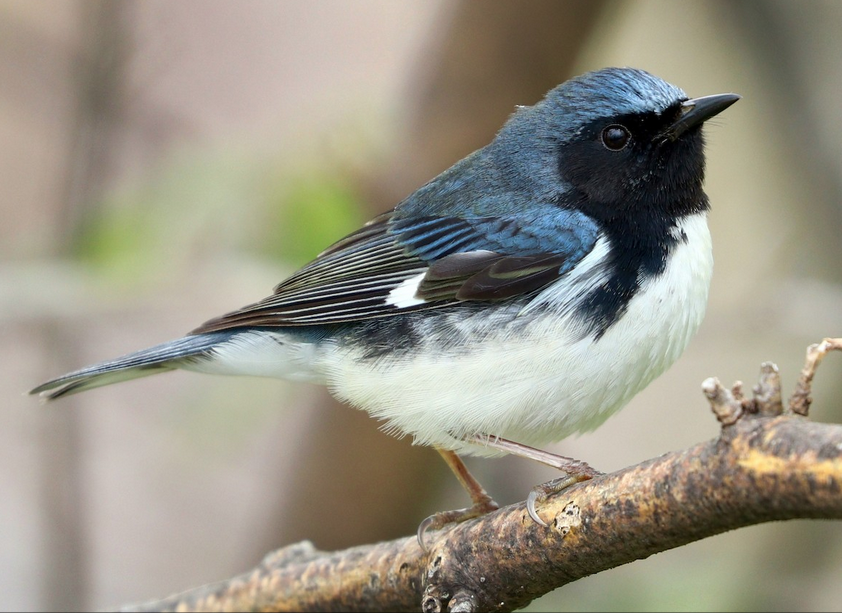
Why are male songbirds starting their spring migration earlier than their female counterparts? Could a shift in the population’s fall migration patterns signal a longer breeding season?
These are questions that deserve more analysis using detailed data to track the seasonal movement of black-throated blue warblers – common songbirds that migrate each year between wintering grounds in Central America and breeding sites in Canada and the Eastern United States, according to a journal article co-authored by LMU Professor Kristen Covino and published in The Auk: Ornithological Advances.
Covino, assistant professor of biology in LMU’s Frank R. Seaver College of Science and Engineering, worked with co-authors Kyle Horton and Sara Morris to analyze 50 years of underutilized federal data on black-throated blue warblers. With this dataset housed at the U.S. Geological Survey Bird Banding Laboratory – where researchers monitor the birds’ movements by fitting them with metal leg bands and codes – the authors determined that the timing of the birds’ spring migration has advanced over the past 50 years, with migrating birds passing through banding sites roughly one day earlier each decade.
They also determined that, while the timing of peak fall migration hasn’t changed, birds are taking longer than they did 50 years ago to move south in the fall.
“The protraction of fall migration means that the season is getting longer overall, but it could also mean that the breeding season may be shifting, ending earlier for some individuals but later for others,” Covino said. “To determine what this means in the context of breeding season shifts in timing, additional studies that incorporate both arrival on the breeding grounds and, importantly, departure from them are needed.”
Furthermore, while their findings can’t be explicitly linked to climate change without incorporating environmental data, the authors write, the Bird Banding Lab data could provide additional answers.
The article, “Seasonally-Specific Changes In Migration Phenology Across 50 Years In The Black-Throated Blue Warbler,” can be found here.



